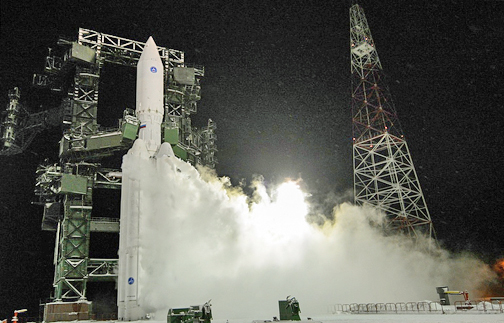
Angara launch photo is courtesy of Russia's Defence Ministry press service / TASS.
TASS, the Russian news agency, recently posted an article at their infosite that focused on the nation’s Angara family of carrier rockets, stating that in the near future, Angara will be able to take about 60 percent of the world market of launch services, as the Proton-M had at its time. Alexander Medvedev, the general designer of launch vehicles at the Khrunichev State Research and Production Space Center, the manufacturer of Proton and Angara, was quoted as saying last week.
According to Medvedev's interview with TASS, in 2002 with the Proton rocket, Russia would win at least 50 percent of the market. In two to two-and-a-half years, that is, in 2004-2005, Russia won 60 percent of the market. This happened despite the fact that the economic situation then was very hard and Khrunichev barely survived. In fact, only commercial launches saved the firm. He believes that with the Angara rocket the company can count on the same and event better performance. If Khrunichev and Russia do everything correctly, then this can happen in the second half of this decade. The STS transportation cost for the Angara rocket family will be 20 to 30 percent less than for the foreign competition.
Angara is a new generation of Russian carrier rockets that is based on universal rocket modules with oxygen-kerosene engines. The family includes carriers from light to heavy class. The first launch of a light-class Angara rocket was carried out in July of 2014, and a heavy-class Angara rocket was, for the first time, launched in December 2014.
The different versions of Angara provide payload capabilities of 2,000 to 50,000 kilograms into LEO. The Angara launch system is planned to be operated from the Plesetsk and Vostochny Cosmodromes and from Baikonur for Commercial Launches. Angara uses a modular approach to create a number of different launch vehicle versions with different payload capabilities. The concept is centered around the Universal Rocket Module that builds the core stage of the launcher and can also function as a strap-on booster similar to the US Delta IV Heavy and Falcon Heavy rockets that use three cores.

